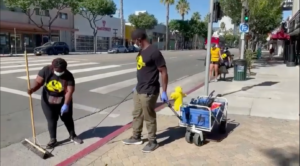Cultural appropriation: what’s the difference between celebrating another culture — and stealing from it?
Learning to understand a culture outside of your own is important. But what’s the difference between celebrating another culture and stealing from it?
Cultural appropriation is taking something from another culture outside of your own and misusing its elements or using them without asking or crediting the source.
Appropriation can be something as simple as wearing a piece of clothing from a different culture as a fashion statement, but the lines between cultural appropriation and appreciation can be blurry.
One example: In October, pop singer Adele responded to critics and fans who objected to an outfit and hairstyle she had worn to a Caribbean festival in London last year. She wore a Jamaican flag print bikini top and a hairstyle worn by black women in the region. The singer told Teen Vogue she was trying to celebrate Jamaican culture, but had not “read the room.”
Adele also has not taken down an Instagram post of her wearing the outfit and hairstyle.
“If I take it down,” she told British Vogue, “it’s me acting like it never happened. And it did. I totally get why people felt like it was appropriating.”
“Folks want to partake [in another culture] because they see something nice,” said Vanessa Galvan, a leader of the affinity group CSUN Latinas Rising. “They see something shiny, they see something different, something exotic, something they haven’t thought of.”
“But it is important to remember,” Galvan added, “there is cultural context and there’s origins, and there’s more to it than just a celebration.”
But it isn’t just celebrities who get stuck. For example, Halloween costumes with Native American themes… or Dia de los Muertos celebrations that miss the holiday’s true meaning, can also cause harm.
As Buzzfeed News pointed out in September, a lot of so-called internet slang is actually rooted in Black Culture. Examples of African American Vernacular English (AAVE) being used out of context. Celebrities such as Olivia Rodrigo, Camilla Cabello and Miley Cyrus to name a few, have all faced criticism for apparent usage of ‘Blaccent’ and or racism online.
People may appropriate culture because they want to connect with other people and be able to understand other people’s cultures, said Ivy Randall, a sociology graduate of California State University, Bakersfield.
“People get really excited about the event and the fun parts about it, that they don’t take time to inform themselves on the history and why people celebrate these cultures,” Randall said. “When people do educate themselves they are more on the appreciate side rather than the appropriation side.”
Galvan and Randall urges people to be more aware of cultural boundaries, which makes it easier to be aware when one crosses a line between appropriation and appreciation. When one misrepresents a culture, people of color are left in a marginalized position where they are not recognized of the true meaning of their culture.
The best antidote to stepping wrong, Galvan and Randall said: educate yourself on the background and history of the culture.
If you decide you appreciate a culture, you should ask for permission and respect the community’s wishes.

 Governor Gavin Newsom recently signed the state’s $47.1 billion annual higher education spending bill, touting investments he said will address college affordability and accessibility and expand financial aid options for students.
Governor Gavin Newsom recently signed the state’s $47.1 billion annual higher education spending bill, touting investments he said will address college affordability and accessibility and expand financial aid options for students.